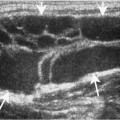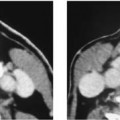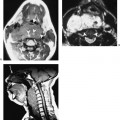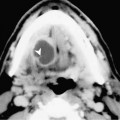Chapter 161 Cat scratch disease is a benign, self-limited disease caused by the bacterium Bartonella henselae. This organism is typically present in the saliva of a normally healthy kitten and may be transferred by a lick, scratch, or bite. It is important to note that a history of a cat scratch is not necessary to make the diagnosis. The disease is most common in children and is most prevalent in regions with a warm and humid climate. The initial symptoms usually develop 6 to 8 weeks after initial exposure. The disease often initially presents as a reddish-brown papule at the site of contact. The patients typically develop fever, fatigue, malaise, and myalgias accompanied by characteristic tender regional lymphadenopathy (Fig. 161–1). The lymph nodes gradually enlarge and reach a maximal size over 2 to 3 weeks. Approximately 10% of patients develop overlying erythema and fluctuant lymph nodes that require drainage. Bartonella henselae is a gram-negative, agyophilic, non–acid fast, pleomorphic bacilli. The diagnosis is confirmed using immunofluorescent antibody, PCR or ELISA serology. Pathologic findings from biopsied lymph nodes reveal granulomatous changes.
Cat Scratch Disease
Epidemiology
Clinical Features
Pathology
Stay updated, free articles. Join our Telegram channel

Full access? Get Clinical Tree








